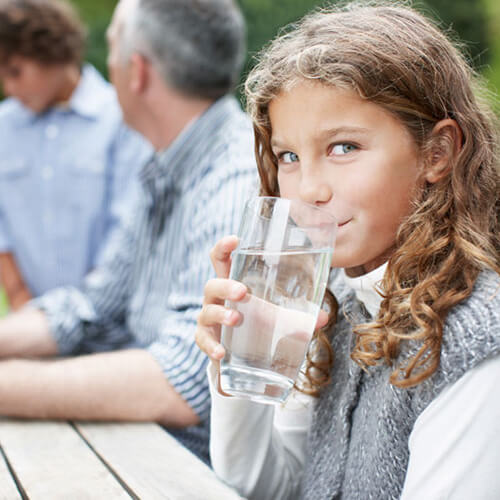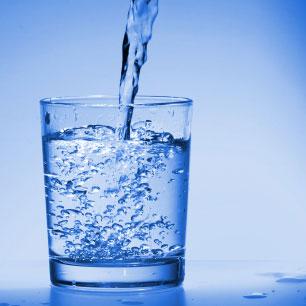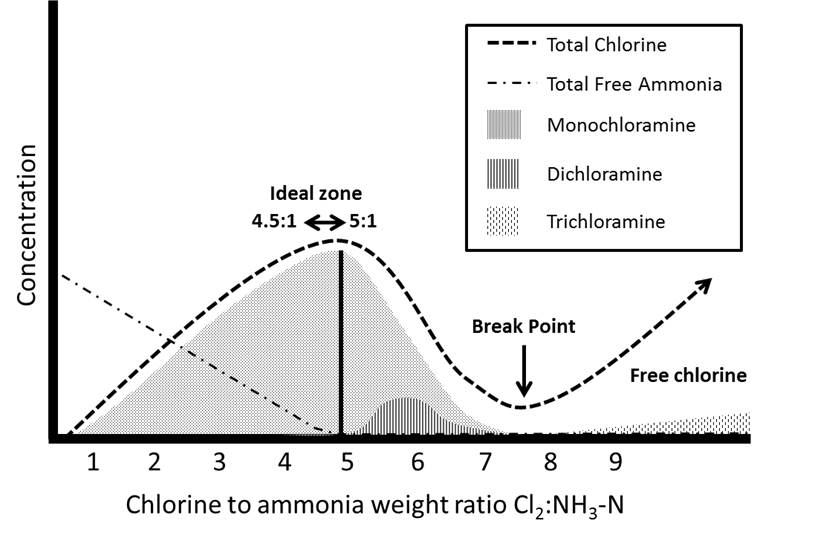what is free chlorine in drinking water
Chlorine levels up to 4 milligrams per liter mgL or 4 parts per million ppm are considered safe in drinking water. Normal chlorine concentrations in scheme drinking water supplies in Western Australia usually range from 05 to 15 milligrams per litre.

Is The Chlorine In Water Bad For You Here S What You Need To Know
Why is chlorine added to drinking water.

. Chloramines have been used by water utilities since the 1930s. Recommended Action Levels for Free Chlorine for Disinfectants Chlorine and Chloramines A free chlorine concentration of 25 mgL should be used as an emergency acute effects level for water treatment facilities employing chlorine or chloramines as disinfectants. The primary purpose of having chlorine in the water is to destroy the bacteria and viruses that can enter a water system in many different ways.
Chlorine in water comes in two basic varieties. For drinking water the water providers add chlorine Cl2 or hypochlorite to the water at the treatment plant. The Science of Water.
Free chlorine is only a water quality concern in public water. Because most bacteria cells such as those found in E. Free chlorine refers to the amount of chlorine that has yet to combine with chlorinated water to effectively sanitize contaminants which means that this chlorine is free to get rid of harmful microorganisms in the water of your swimming pool.
Why is chlorine in drinking water dangerous. Simply put Free is the chlorine that is ready to fight bacteria and other microbes Combined is the chlorine that has mixed with organic matter that has mostly been used up Total chlorine is the combination of free and combined chlorine. Once the free chlorine does combine it will begin to kill and neutralize the waters contaminants.
Using or drinking water with small amounts of chlorine does not cause harmful health effects and provides protection against waterborne disease outbreaks. Different processes can be used to achieve safe levels of chlorine in drinking water. Is chlorinated water acidic.
This chemical isnt naturally occurring so its highly unlikely that it will end up in your local groundwater. Because when chlorine mixes with even minute amounts of organic compounds that are very often found in water they produce harmful by-products called Trihalomethanes THMs. Are most commonly formed when ammonia is added to chlorine to treat drinking water.
Without a carbon filter or ascorbic acid the free chlorine level in most city treated water may be higher than it should be for healthy water consumption. These by-products produce free radicals in the body which trigger cell damage. It is possible that higher levels may be detected during maintenance but this should be a short term deviation from the average reading.
Other methods allow for the determination of. Use a filter either a water pitcher or a whole-house filtration system to remove the smell and taste of chlorine from your water. Chlorination is the process of adding chlorine to drinking water to kill parasites bacteria and viruses.
While early treatment of drinking water dates back to at least 4000 BC it was primarily intended. Chlorine is a standard chemical element that is often used to provide clean drinking water to people around the worldChlorine is very effective and important for water quality monitoring because of its ability to kill bacteria through a chemical reaction. Chloramines also known as secondary disinfection are disinfectants used to treat drinking water and they.
What are safe levels of chlorine in drinking water. When chlorine is added to water it forms a weak acid called hypochlorous acid. When ammonia or organic nitrogen is also present chloramines known as monochloramine dichloramine and trichloramine will quickly form.
75 and 25 C. It is the only effective large scale method for residual protection of drinking water. When it dissolves in the water the chlorine converts to hypochlorous and hydrochloric acid HCl.
These are the most practical and adequate ways to give you peace of mind that your drinking water tastes and smells free of chlorine. Using carbon in a Water Refiner a whole-house filtration system andor a drinking water system can help to ensure that you and your family get to drink and bath with fresh clean great-tasting chlorine-free water every day. Ad Waterboy is Fresh Clean and Great Taste.
Chlorine levels may vary due to the flow rate of the water in the system your proximity to the water treatment plant and during maintenance periods. Chlorine can react with ammonia or amines in water to form chloramines 45. There they pressurize the chlorine gas to convert it to a liquid.
A chlorine residual provides the primary protection from these known and well understood pathogens. ANALYTICAL METHODS A colorimetric method can be used to determine free chlorine in water at concentrations of 0110 mglitre. Provide longer-lasting disinfection as the water moves through pipes to consumers.
However your well may still be at risk of chemical contamination from pesticides and herbicides especially if you live in an area where agricultural activity is high. Chloramines are also known as combined chlorine. Free chlorine refers to both hypochlorous acid HOCl and the hypochlorite OCl- ion or bleach and is commonly added to water systems for disinfection.
In England and Wales chlorine levels are maintained by individual water companies but typically the level of residual disinfectant in the form of free or combined chlorine is 05mgl or less. Free chlorine is the amount of chlorine present in chlorinated water that is availableor free that isto combine with that chlorinated water. Free chlorine is also known as chlorine residual free chlorine residual and residual chlorine.

Does Boiling Remove Chlorine How To Dechlorinate Water

Measurement Of Free Chlorine Levels In Water Using Potentiometric Responses Of Biofilms And Applications For Monitoring And Managing The Quality Of Potable Water Sciencedirect

How To Remove Chlorine From Water Esp Water Products

Is Chlorine Water Safe To Drink Culligan Water

Is The Chlorine In Water Bad For You Here S What You Need To Know

Chlorine In Our Water Drdeborahmd Com

Ammonia In Tap Water Causes Removal Multipure

Chlorine In Drinking Water Best Home Water Treatment Systems

Chloramines In Drinking Water Guideline Technical Document For Public Consultation Canada Ca

Residual Chlorine Levels Mg L In Drinking Water Among Developed Download Scientific Diagram
How To Remove Chlorine And Chloramine From Drinking Water Naturally
Effects Of Drinking Chlorine Water Is It Safe Detox Cure

Residual Chlorine Levels Mg L In Drinking Water Among Developed Download Scientific Diagram
How Much Chlorine Is In Tap Water Flowater

Safe To Drink How Much Chlorine Should Your Water Contain

The Claim Chlorine In Drinking Water Can Increase The Risk Of Cancer The New York Times

Concentrations Of Free Combined And Total Chlorine In The Drinking Download Scientific Diagram

Chlorine In Drinking Water Continuous Monitoring For Detection
